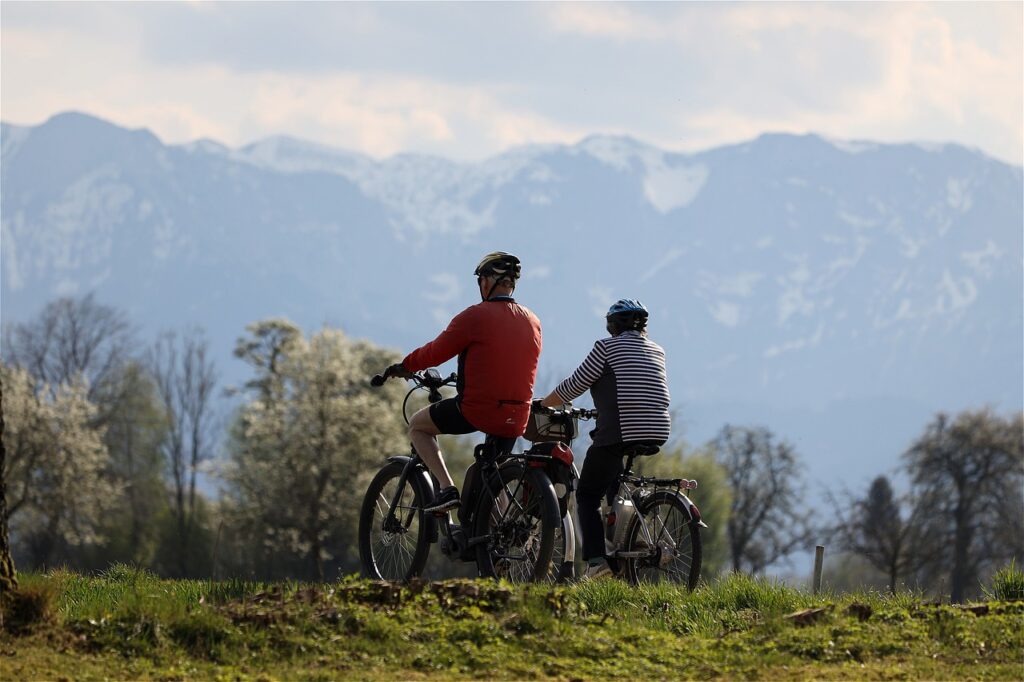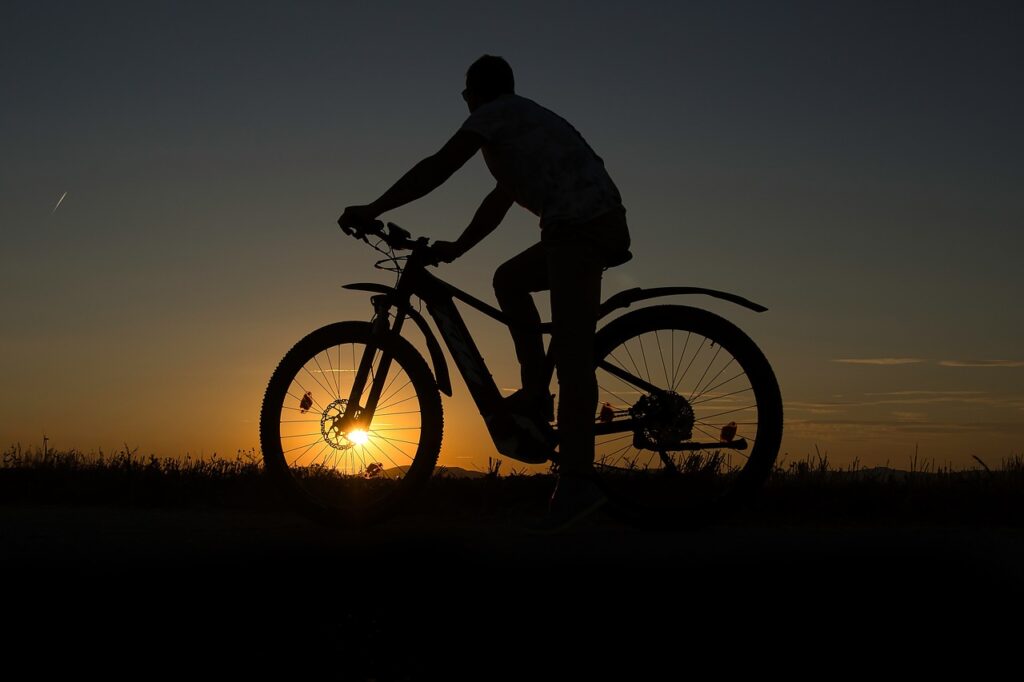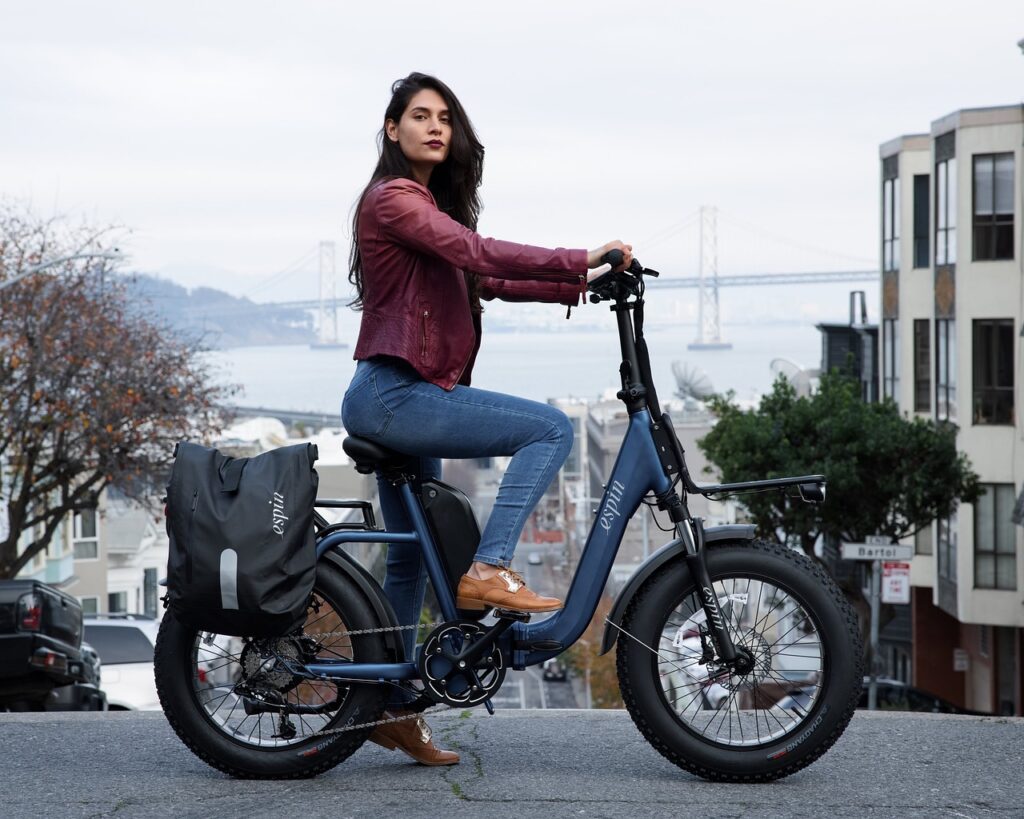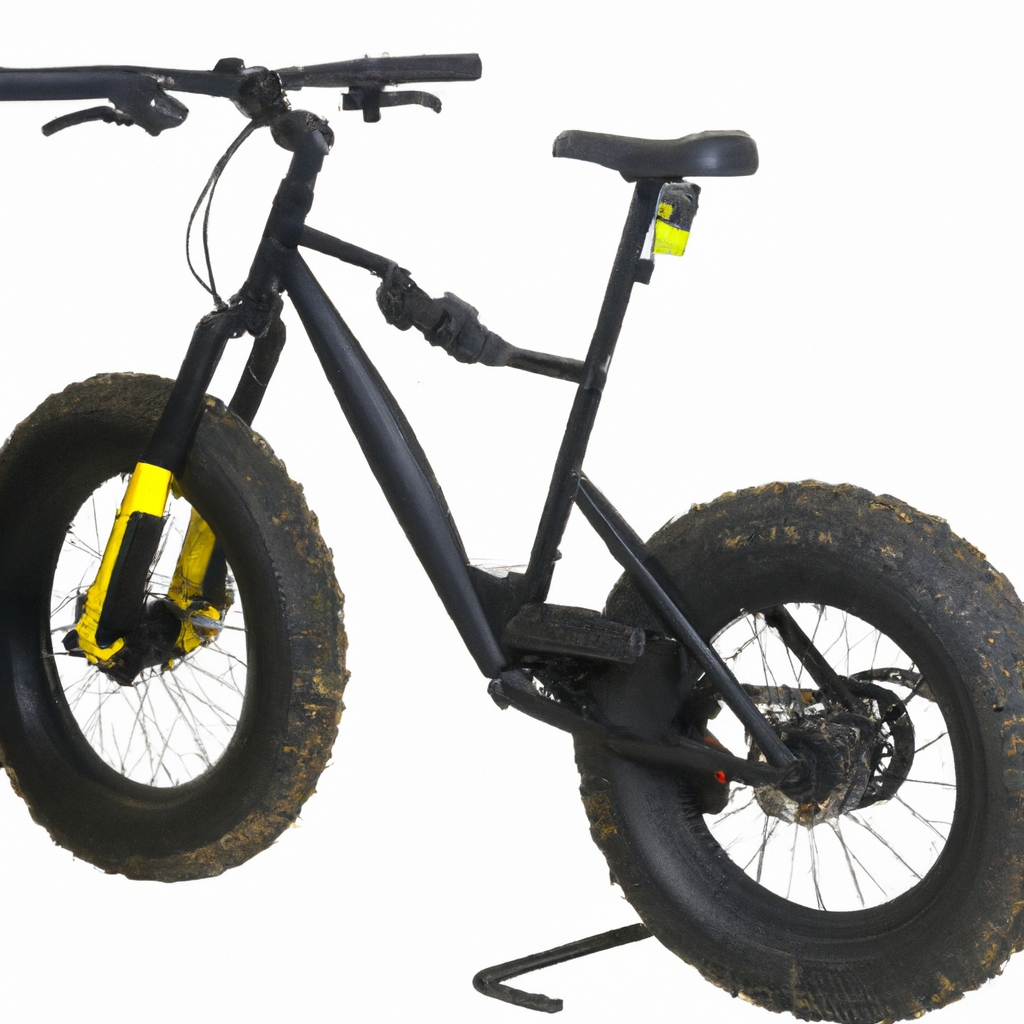Hey there, E-Bike enthusiasts! Get ready to take your riding skills to the next level as we explore the thrilling world of extreme uphill climbing on an E-Bike. In this article, we will provide you with the necessary gear and techniques to conquer those challenging inclines like a pro. Whether you’re a mountain biker looking to tackle steep trails or an adventurous commuter navigating hilly terrains, we’ve got you covered. So fasten your seatbelts (or should we say helmet straps) and get ready for an exhilarating ride as we delve into the world of extreme uphill climbing on an E-Bike!

Overview
Welcome to our comprehensive guide on extreme uphill climbing on an E-Bike. In this article, we will explore the importance of gear and techniques for enhancing performance, ensuring safety, and preventing gear damage. We will also discuss how to choose the right E-Bike for uphill climbing, the essential gear needed, and techniques for effective climbing. Additionally, we will delve into understanding motor assistance modes, optimizing battery usage, upgrading E-Bike components, and safety precautions for extreme uphill climbing. By the end of this article, you will have all the knowledge you need to conquer those steep inclines with confidence.
Importance of Gear and Techniques
Enhancing Performance on Steep Inclines
When it comes to extreme uphill climbing on an E-Bike, having the right gear and techniques is crucial for enhancing your performance. Steep inclines can be challenging, but with the proper gear and techniques, you can conquer them effortlessly. By understanding how to utilize your gears effectively and maintain momentum, you can power through even the steepest of climbs. Additionally, having the right bike components and upgrades can greatly improve your climbing performance.
Ensuring Safety and Control
Safety should always be a top priority when undertaking extreme uphill climbing. Steep inclines pose unique challenges, including the risk of losing control and potential accidents. Investing in proper protective gear, such as a helmet and other protective equipment, is essential to ensure your safety. Additionally, understanding proper braking techniques, maintaining control and balance, and being prepared for emergencies will help keep you safe while tackling uphill climbs.
Preventing Gear Damage
Extreme uphill climbing can put a lot of strain on your E-Bike’s gears. It is essential to take preventative measures to avoid gear damage. Understanding the capabilities and limitations of your E-Bike, as well as implementing appropriate techniques for climbing, will help protect your gears. Additionally, regular maintenance and inspection of your bike’s components will ensure they are in optimal condition, reducing the risk of gear damage during uphill climbs.
Choosing the Right E-Bike for Uphill Climbing
Considerations for E-Bike Models
When selecting an E-Bike for extreme uphill climbing, it is important to consider certain factors. The type of terrain you will be riding on, the gradient of the inclines you plan to tackle, and your personal preferences all play a role in choosing the right E-Bike model. Mountain E-Bikes are typically well-suited for uphill climbing due to their robust design and off-road capabilities. However, there are also other models specifically designed for road or hybrid riding that may be suitable depending on your riding preferences.
Motor Power and Torque
The motor of an E-Bike plays a crucial role in its performance on uphill climbs. When considering an E-Bike for extreme uphill climbing, look for a motor with sufficient power and torque. Higher power motors will provide you with the necessary assistance to conquer steep inclines with ease. Additionally, motors with a high torque rating will offer improved acceleration, making uphill climbs more manageable.
Battery Capacity and Range
The battery capacity and range of an E-Bike are vital factors to consider, especially for uphill climbing. Steep inclines require more power, causing your battery to drain more quickly. Ensuring your E-Bike has a sufficient battery capacity and range will allow you to tackle longer climbs without worrying about running out of power. Consider the terrain you will be riding on and choose a battery with enough capacity to meet your climbing needs.
Weight and Frame Design
When it comes to extreme uphill climbing, the weight and frame design of your E-Bike can significantly impact your performance. A lightweight E-Bike will be easier to maneuver and handle on steep climbs. Look for materials such as carbon fiber or aluminum that offer a balance between weight and durability. Additionally, a frame design optimized for climbing will provide better weight distribution and stability, keeping you in control during uphill climbs.
Essential Gear for Uphill Climbing
Proper Helmet and Protective Gear
Safety should always be a top priority when undertaking extreme uphill climbing. Wearing a properly fitting helmet is essential to protect your head in case of a fall or accident. Additionally, invest in other protective gear such as knee and elbow pads, as well as gloves, to protect vulnerable areas of your body.
Appropriate Clothing and Footwear
Choosing the right clothing and footwear can greatly enhance your comfort and performance during uphill climbs. Opt for moisture-wicking and breathable clothing to keep you cool and minimize sweat buildup. Wear appropriate footwear with good grip to ensure traction on the pedals and stability when climbing challenging terrains.
Hydration Systems
Staying hydrated is essential during uphill climbs, as it helps maintain your energy levels and prevents fatigue. Invest in a hydration system, such as a backpack with a built-in water bladder or a water bottle cage mounted on your bike, to easily access water while riding. Make sure to drink regularly to stay hydrated throughout your climbs.
Tools and Emergency Repair Kit
Being prepared for any emergencies or mechanical issues is crucial when undertaking extreme uphill climbing. Carry essential tools such as a multi-tool, tire levers, spare inner tubes, and a mini pump for quick repairs on the trail. Additionally, having a basic emergency repair kit, including a chain tool and spare chain links, can help you address more significant issues that may arise during your climbs.

Techniques for Effective Uphill Climbing
Gearing Strategies
Utilizing the right gearing strategy is vital for effective uphill climbing. Understanding how your gears work and when to shift is essential to maintain a comfortable pedaling cadence. Start in a lower gear when tackling steep inclines to ensure you have enough power to get started. As the climb becomes less steep, higher gears can be utilized to maintain momentum.
Maintaining Momentum
Maintaining momentum while climbing uphill is crucial for conquering challenging terrains. Momentum helps you overcome the initial resistance and makes it easier to pedal uphill. Avoid abrupt stops or losing speed, as it can be challenging to regain momentum on steep inclines. Focus on maintaining a steady pace and rhythm to make your uphill climbs more efficient.
Positioning and Body Posture
Proper positioning and body posture can greatly improve your climbing performance. Leaning forward slightly and keeping your weight centered over the bike will help maintain traction on the rear wheel and improve stability. Bend your elbows and knees to act as suspension, absorbing any bumps or obstacles on the trail. Additionally, aim to keep your upper body relaxed and your eyes focused on the path ahead.
Use of Assist Levels and Mode Selection
Most E-Bikes offer different levels of motor assistance and various modes to choose from. Understanding how to utilize these features effectively can greatly enhance your uphill climbing experience. Experiment with different assist levels and mode selections to find the right balance of power and control for your climbs. Utilize higher assist levels for steeper climbs and switch to lower levels or even non-assist mode when the terrain allows.
Cadence and Pedaling Techniques
Maintaining an optimal cadence and utilizing proper pedaling techniques are essential for effective uphill climbing. Aim for a steady and consistent pedaling rhythm, allowing you to maintain power and momentum. Avoid mashing on the pedals, as it can cause fatigue quickly. Instead, focus on smooth and fluid pedal strokes, utilizing your entire pedal stroke to distribute the effort evenly.
Understanding Motor Assistance Modes
Exploring Pedal-Assist Modes
Pedal-assist modes are a common feature in E-Bikes that provide assistance based on the rider’s pedaling input. Depending on the mode selected, the motor will offer varying levels of assistance. Common pedal-assist modes include Eco, Tour, Sport, and Turbo, each providing a different amount of power and control. Experiment with different modes to find the one that suits your uphill climbing needs.
Utilizing Throttle Modes
Some E-Bikes come equipped with throttle modes, allowing riders to control the motor’s power with a throttle lever or button. Throttle modes provide instant power without the need for pedaling and can be useful for tackling steep climbs or when you need an extra boost. However, it is essential to use throttle modes responsibly and ensure they are legal in your riding area.
Regenerative Braking
Regenerative braking is a feature available in some E-Bikes that allows the motor to recharge the battery when braking or coasting downhill. While regenerative braking is not directly related to uphill climbing, understanding how it works can help optimize your overall E-Bike usage. Utilize regenerative braking when descending from uphill climbs to replenish your battery and extend your riding range.

Optimizing Battery Usage
Monitoring Battery Level
Keeping a close eye on your battery level is essential for optimizing your uphill climbing experience. Many E-Bikes come equipped with battery level indicators, allowing you to monitor your battery’s charge. Plan your climbs accordingly, ensuring you have enough battery capacity to complete your intended routes and avoid running out of power in remote areas.
Efficient Power Management
Efficient power management is key to prolonging your battery’s lifespan and optimizing its usage during uphill climbs. Avoid using the highest assist level unnecessarily, as it can drain your battery quickly. Instead, utilize lower assist levels when the terrain allows or switch to non-assist mode when you can rely solely on your pedaling power. Additionally, maintain a steady cadence and avoid unnecessary changes in speed, as it can impact your battery consumption.
Using Eco and Range Extender Modes
Many E-Bikes offer Eco and Range Extender modes to help maximize battery efficiency during uphill climbs. Eco mode provides a lower level of motor assistance, conserving battery power while still offering support. Range Extender mode, if available, can be utilized to extend your battery’s range by utilizing the motor’s power more conservatively. Experiment with these modes to find the right balance between performance and battery efficiency.
Upgrading E-Bike Components for Uphill Climbing
Considerations for Motor and Battery Upgrades
If you find that your current E-Bike’s motor or battery does not provide sufficient power for extreme uphill climbing, upgrading these components may be a viable option. Consider consulting with a professional or reputable bike shop to determine suitable motor and battery upgrades for your E-Bike. Upgrading to a more powerful motor or a higher-capacity battery can greatly enhance your climbing performance.
Enhancing Climbing Performance through Gear System
The gear system of your E-Bike plays a significant role in your climbing performance. If you find that your current gear system is not suitable for extreme uphill climbs, consider upgrading to a system that offers a wider range of gears. A wider gear range will provide you with more options to find the right gear for each climb, ensuring you can maintain a comfortable pedaling cadence.
Brake System Upgrades for Improved Control
Having reliable and responsive brakes is crucial for maintaining control while climbing uphill. If you find that your current brake system is not up to par, consider upgrading to a high-quality braking system. Disc brakes, especially hydraulic ones, provide excellent stopping power and modulation, giving you better control during steep climbs. Upgrading your brake system will enhance your overall safety and confidence while tackling extreme uphill climbs.

Safety Precautions for Extreme Uphill Climbing
Risk Assessment and Route Planning
Before embarking on extreme uphill climbing, always conduct a thorough risk assessment and plan your route accordingly. Evaluate the difficulty of the terrain, the gradient of the inclines, and any potential hazards or obstacles. Ensure that you have a clear understanding of the route and have prepared for any contingencies or emergency situations that may arise.
Proper Braking Techniques
Knowing how to brake effectively is crucial for maintaining control and safety during extreme uphill climbing. Avoid using excessive force on the brakes, as it can cause the bike to skid and result in loss of control. Instead, apply gradual and even pressure on the brakes, allowing them to modulate your speed smoothly. Practice proper braking techniques in a controlled environment before attempting extreme uphill climbs.
Maintaining Control and Balance
Maintaining control and balance is essential when climbing uphill. Keep your weight centered over the bike by leaning slightly forward, distributing your weight evenly. Avoid sudden movements or jerking the handlebars, as it can affect your balance and stability. Focus on maintaining a smooth and steady pace, using proper body posture and technique to tackle challenging terrains.
Emergency Preparedness
Being prepared for emergencies is crucial when undertaking extreme uphill climbing. Carry a first aid kit, a fully charged mobile phone, and any necessary emergency contact information. Additionally, inform someone of your intended route and expected time of return. Familiarize yourself with basic bike repairs and carry the necessary tools and spare parts to address common mechanical issues that may arise during your climbs.
Conclusion
Congratulations! You have reached the end of our comprehensive guide on extreme uphill climbing on an E-Bike. We have covered the importance of gear and techniques, choosing the right E-Bike, essential gear, techniques for effective climbing, understanding motor assistance modes, optimizing battery usage, upgrading E-Bike components, and safety precautions. Armed with this knowledge, you are now ready to take on those challenging uphill climbs with confidence. Remember to always prioritize safety, be prepared, and enjoy the thrill of conquering steep inclines on your E-Bike. Happy riding!




